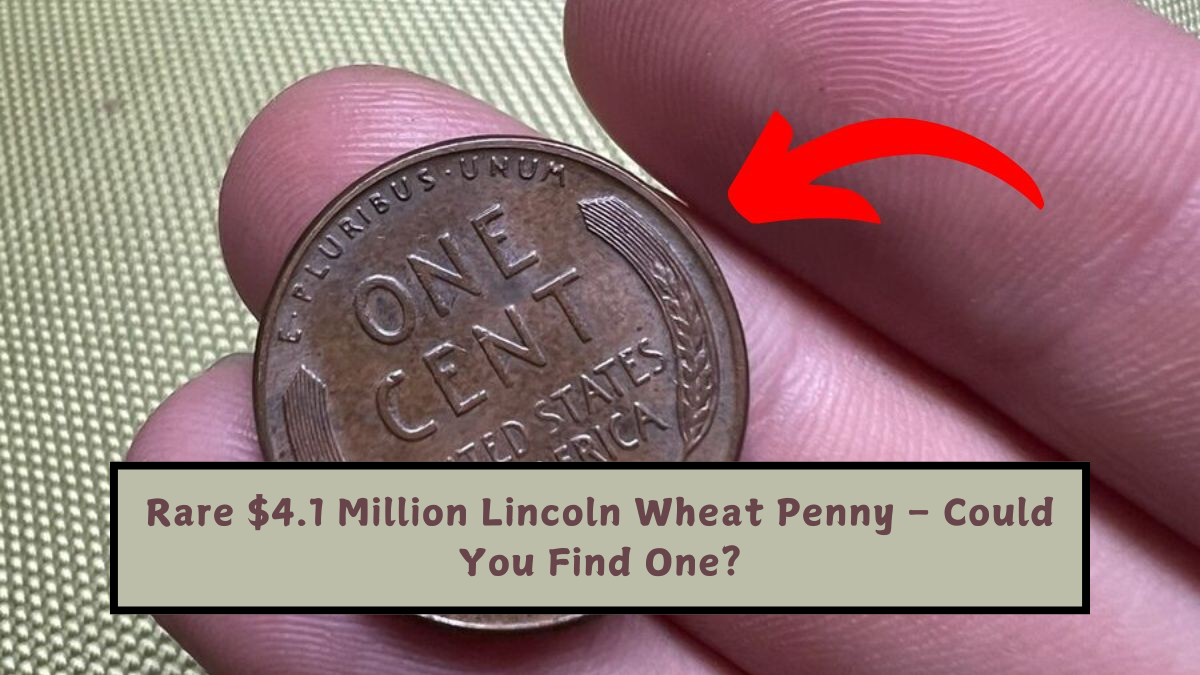One of the most recognizable coins in American history is the Lincoln Wheat Penny. While most pennies hold only their face value, certain rare versions have captured the attention of collectors, with some selling for millions of dollars.
Among these, the highly sought-after 1943-D bronze Lincoln Wheat Penny stands out, fetching an astonishing $4.1 million at auction. But what makes this penny so unique, and could one still be hiding in everyday circulation? Let’s dive into the fascinating story behind this valuable coin.
A Glimpse Into the History of the Lincoln Wheat Penny
First introduced in 1909, the Lincoln Wheat Penny was created to honor the 100th anniversary of President Abraham Lincoln’s birth. Designed by Victor David Brenner, it became the first U.S. coin to feature a president’s portrait. The coin was dubbed the “Wheat Penny” because its reverse side features two wheat stalks, which stand for wealth.
The penny remained in circulation until 1958, when it was replaced by the Lincoln Memorial design. Despite its long history, millions of Lincoln Wheat Pennies still exist in circulation today, including rare and valuable variants.
The $4.1 Million Lincoln Wheat Penny
One of the most famous and valuable Lincoln Wheat Pennies is the 1943-D bronze variant. During World War II, the U.S. Mint shifted to using steel pennies to conserve copper for wartime production. However, a small number of bronze planchets (coin blanks) from 1942 were mistakenly used during minting at the Denver Mint in 1943, creating a rare minting error.
In 2010, one of these coins was sold at auction for $1.7 million. Since then, its value has continued to rise, with recent sales culminating in an astounding $4.1 million price tag.
Why Is the 1943-D Bronze Penny So Valuable?
The value of the 1943-D bronze penny is driven by several key factors:
- Rarity: Only a few specimens of this coin are known to exist, making it one of the rarest coins in American history.
- Minting Error: The accidental use of bronze planchets during steel production adds a fascinating historical context to this coin.
- Historical Context: This coin represents a unique moment during World War II, making it highly collectible.
- Collector Demand: Rare coins like the 1943-D bronze penny generate intense demand among collectors, which drives up their market value.
How to Identify a 1943-D Bronze Penny
If you come across a 1943 penny, here are steps to determine if it’s the rare bronze version:
- Check the Mint Mark: The “D” mint mark below the date signifies that it was minted in Denver.
- Color: Bronze pennies will have a reddish-brown hue, unlike the silver-gray color of steel pennies.
- Magnet Test: Bronze pennies are not magnetic, but steel pennies are.
- Weight: A bronze penny weighs about 3.11 grams, while steel pennies weigh 2.7 grams.
If your coin matches these characteristics, consider having it authenticated by a professional coin grader like PCGS or NGC.
Other Rare and Valuable Lincoln Wheat Pennies
While the 1943-D bronze penny holds the highest value, there are other Lincoln Wheat Pennies that are highly sought after:
- 1909-S VDB Penny: Only 484,000 of these pennies were minted, making them incredibly rare and valuable.
- 1914-D Penny: With fewer than 1.2 million produced, this penny is another prized collectible among collectors.
- 1922 Plain Penny: A minting error resulted in some coins being struck without a mint mark, adding to their rarity.
Still in Circulation: Could You Find One?
It’s possible that rare Lincoln Wheat Pennies, including the $4.1 million 1943-D bronze variant, are still in everyday circulation. Many people overlook pennies, mistaking them for ordinary coins. Searching through old piggy banks, coin jars, or even pocket change could yield hidden treasures. With a keen eye, you might uncover one of these rare coins.
How to Proceed If a Rare Penny Is Found
If you believe you’ve discovered a rare Lincoln Wheat Penny, here’s what you should do:
- Conduct Basic Tests: Use a magnet and a scale to check the coin’s material and weight.
- Research: Compare your coin to images and descriptions of known rare variants.
- Seek Expert Help: Contact a certified coin dealer or a professional coin grading service like PCGS or NGC.
- Decide Whether to Sell or Keep: Rare coins like the 1943-D bronze variant can fetch millions at auctions.
The Legacy of the Lincoln Wheat Penny
The Lincoln Wheat Penny is more than just a piece of currency—it represents American history and cultural significance. Its enduring legacy, combined with the excitement of discovering rare variants, continues to captivate collectors worldwide.
So, the next time you come across a penny, take a closer look—you might just uncover a fortune hiding in plain sight!
Conclusion
The Lincoln Wheat Penny valued at $4.1 million is a true testament to the enduring appeal of rare coins. While the chances of finding one may be slim, the potential reward makes every penny worth examining.
Next time you sift through your change, keep your eyes peeled—you could be holding a piece of history worth millions.
FAQs
How can I determine whether the coin I have from 1943 is made of bronze?
A genuine 1943-D bronze penny will have a reddish-brown color and won’t be magnetic. Use a magnet to check—steel pennies are magnetic, while bronze ones are not.
Where can I get my penny authenticated?
You can have your coin authenticated by a reputable coin grading service like PCGS or NGC.
What should I do if I find a rare penny?
Research your coin, conduct basic tests to confirm its material and weight, and seek professional help for authentication. Rare pennies can be valuable, so it’s wise to get expert advice.

